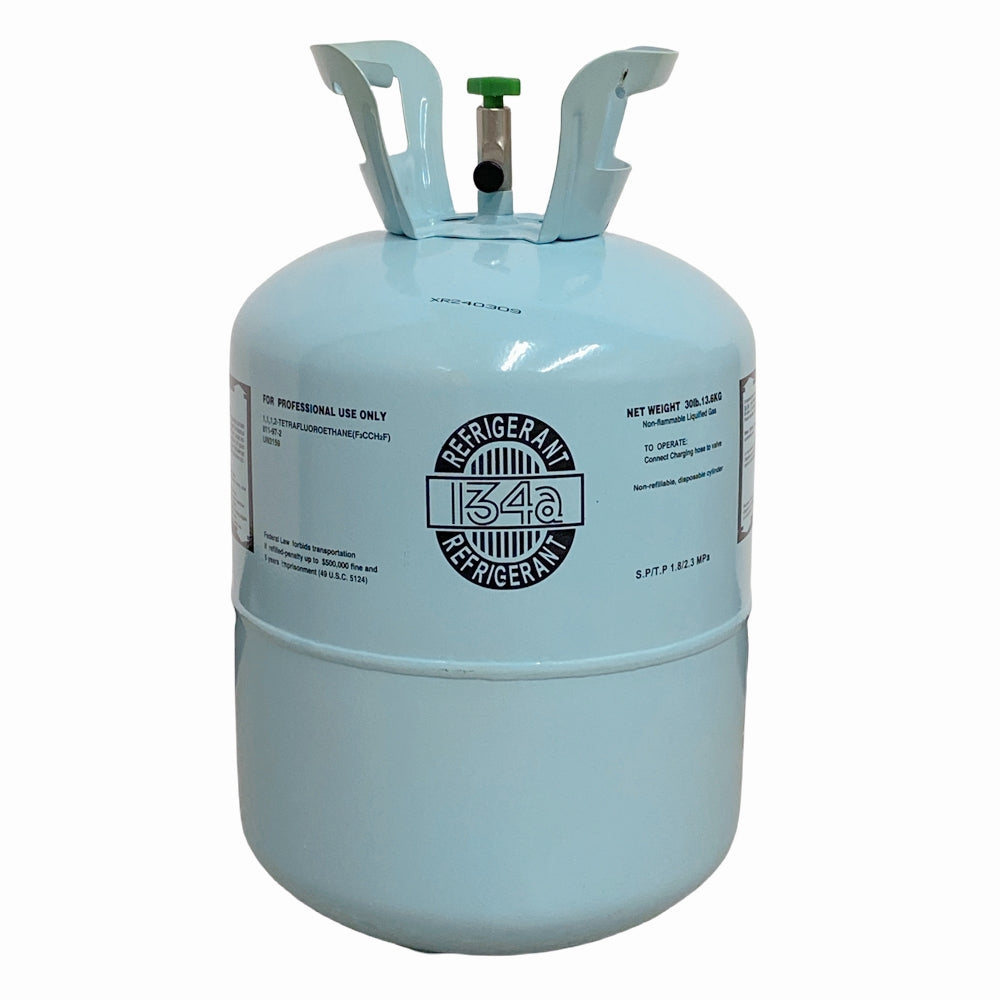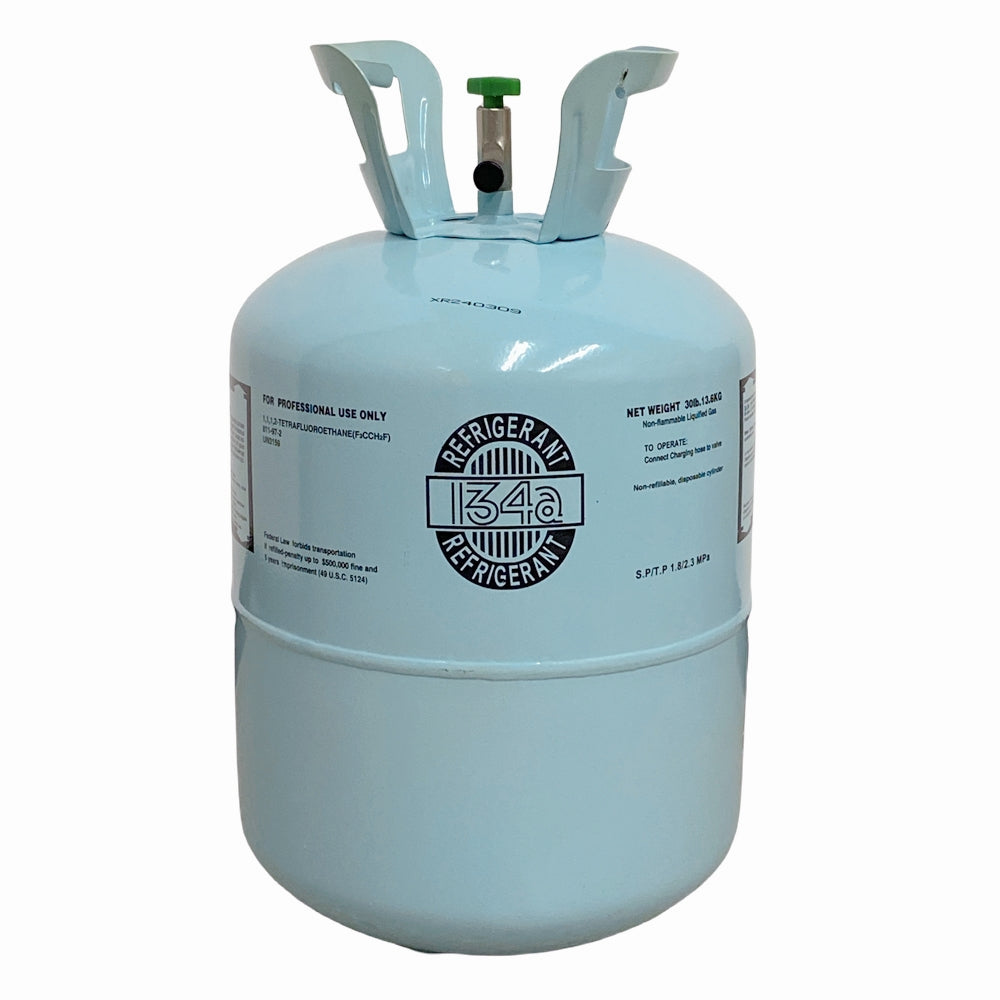
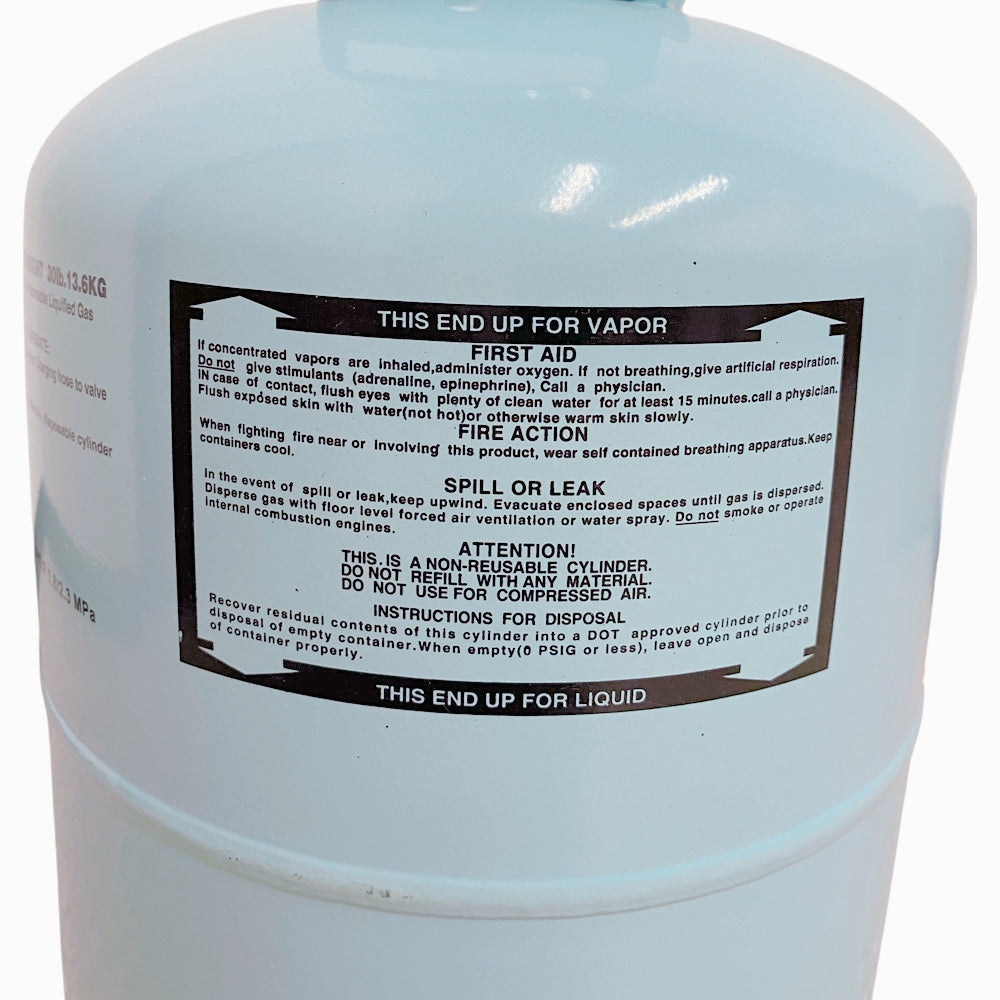
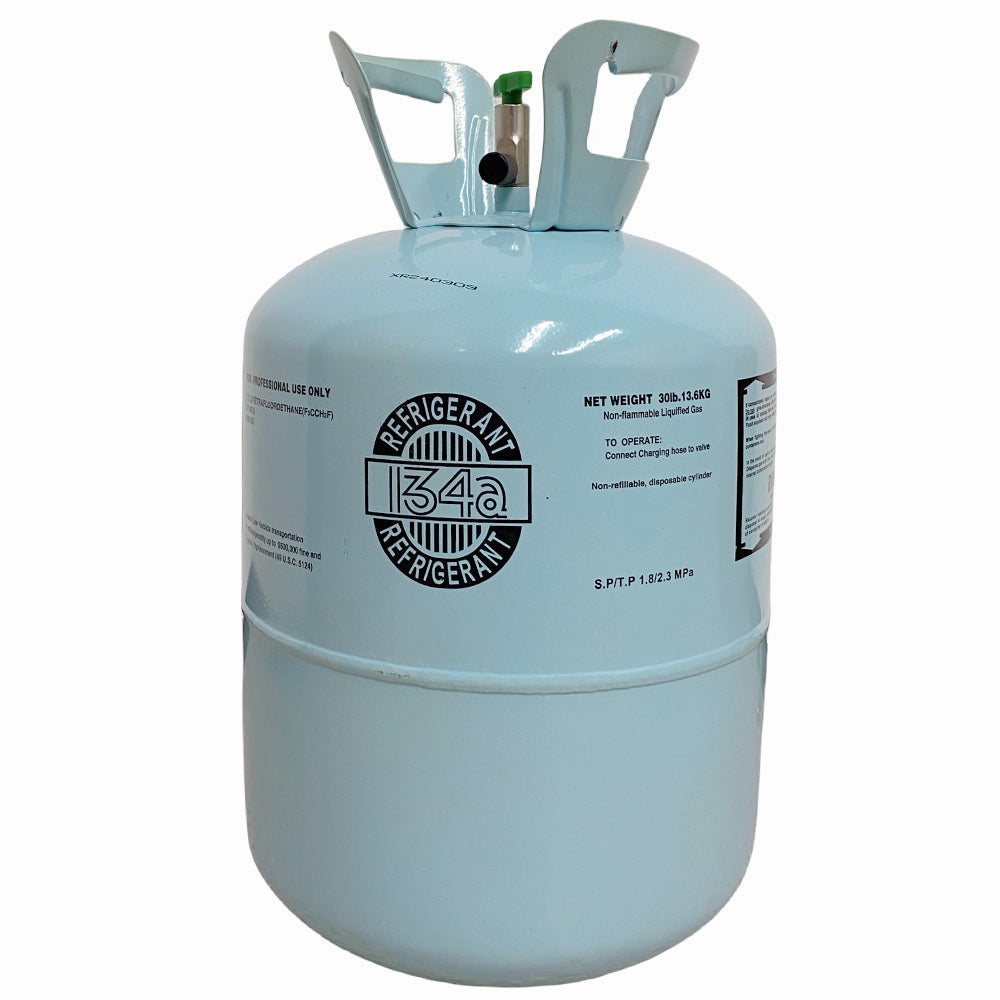
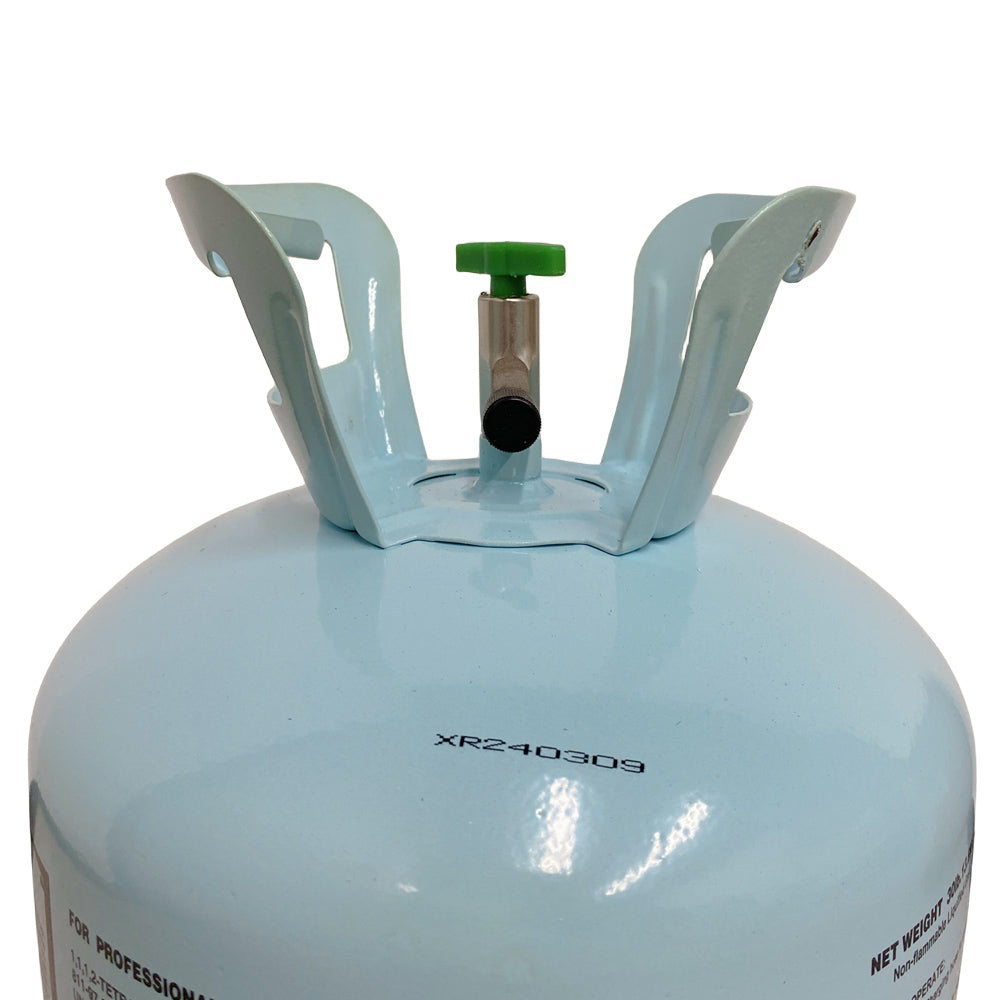
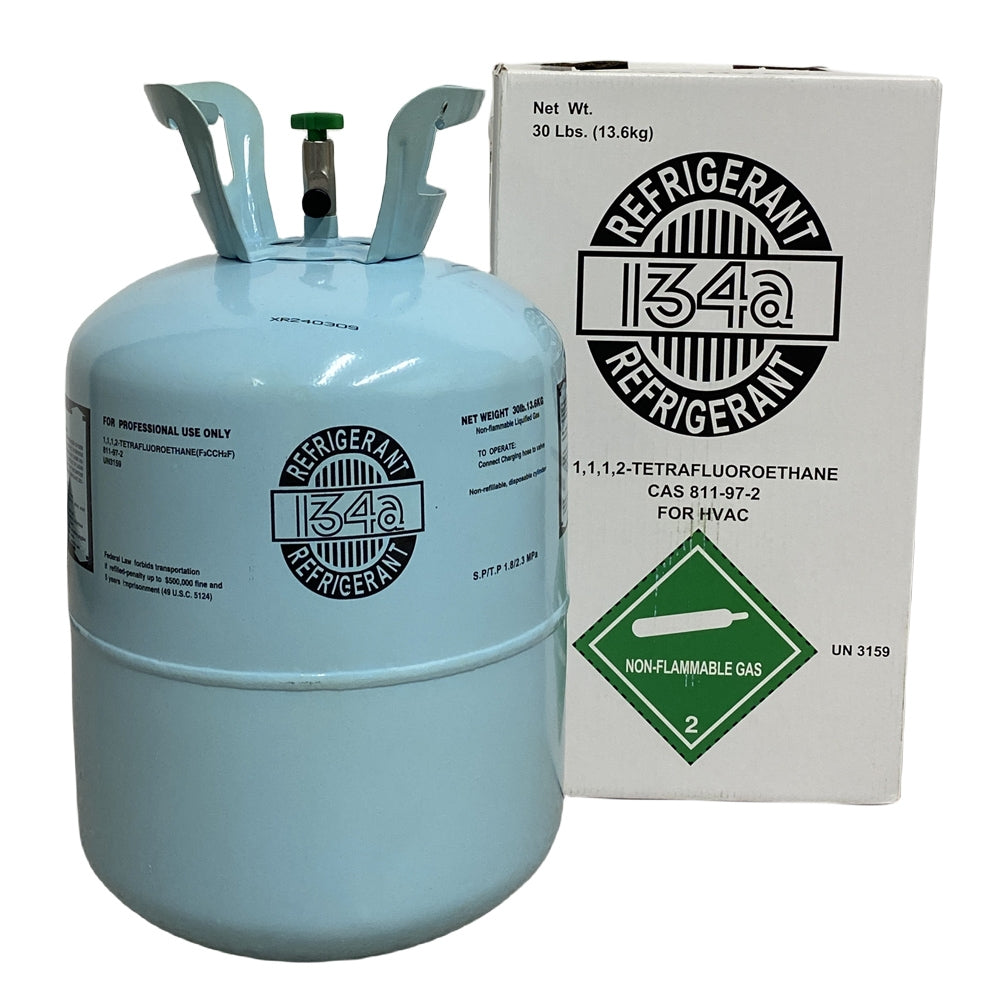
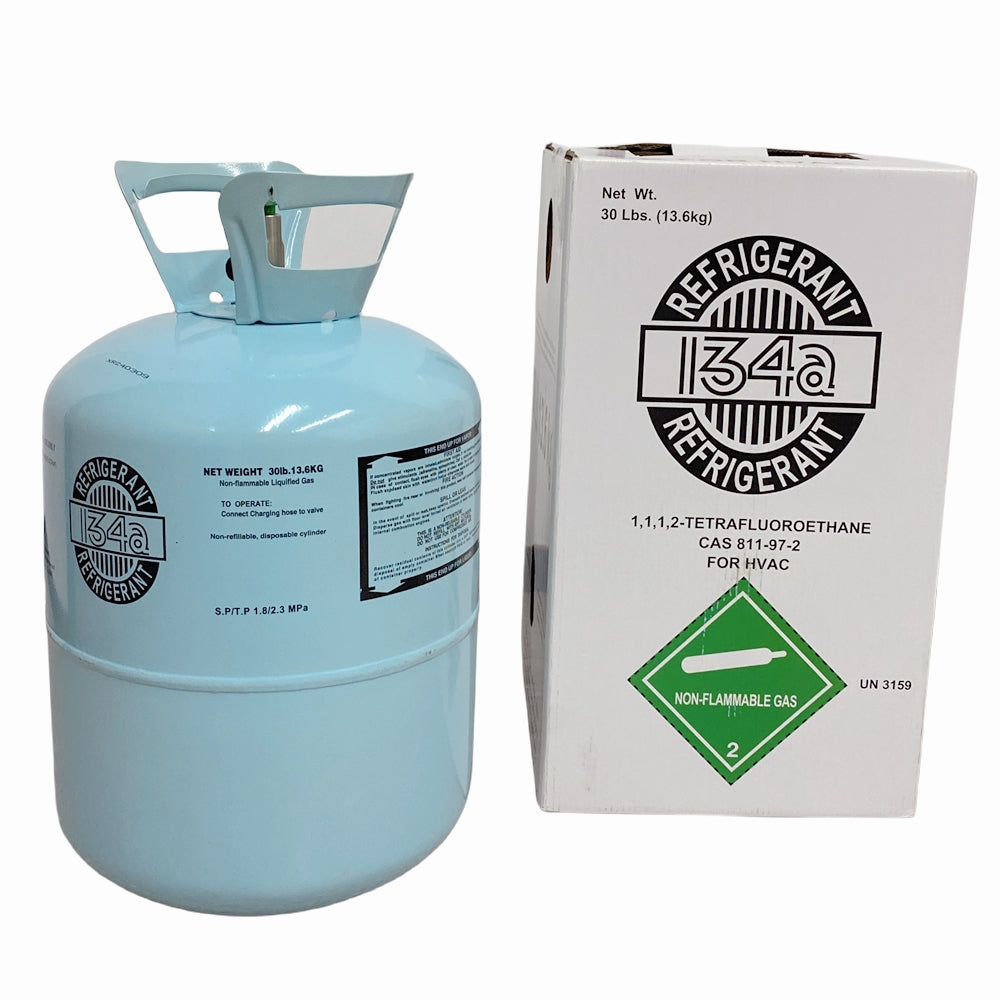
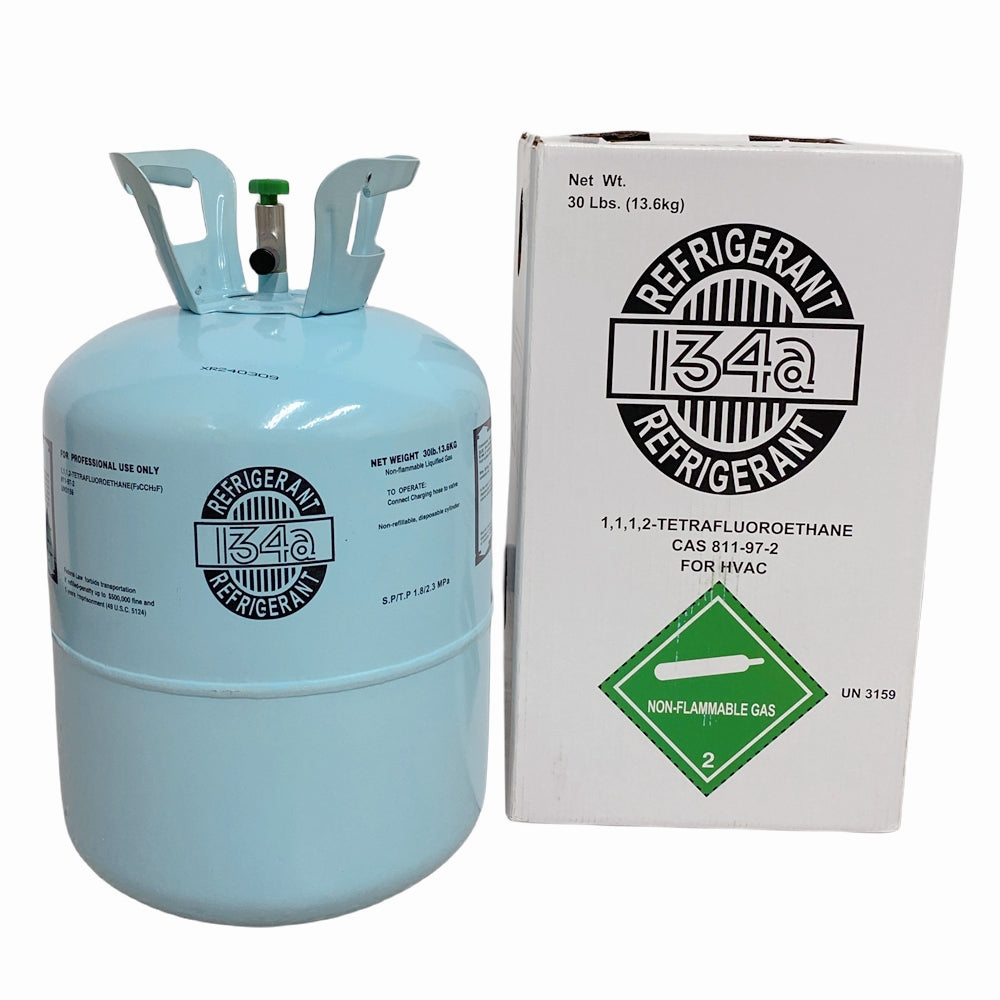
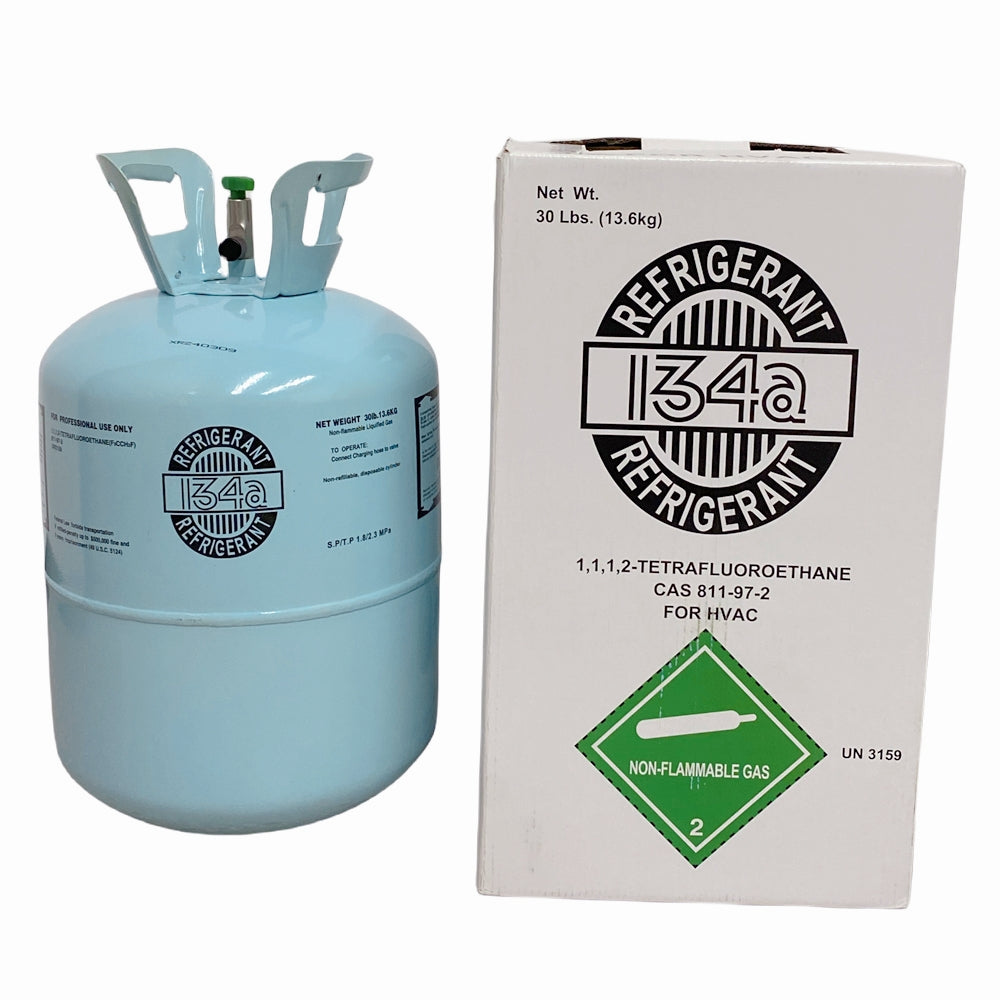
FAQ
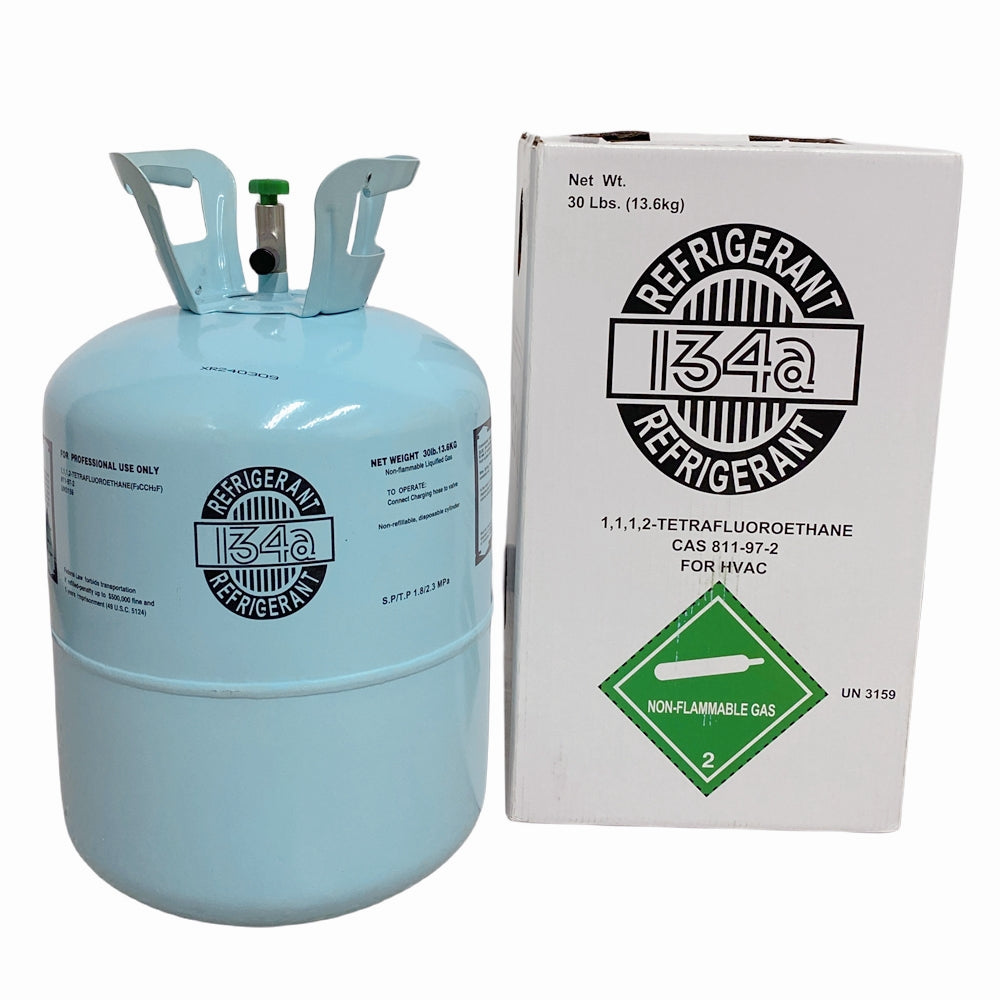
Is this an empty tank or is it pre-filled with other gases?
This canister contains 30 pounds of refrigerant.
Basic properties and environmental protection of R134A
Environmental protection: R134A does not contain chlorine atoms, belongs to the HFC refrigerant, and does not damage the ozone layer (ODP value is 0)
Application areas: Widely used in low and medium temperature refrigeration scenarios such as car air conditioners, household refrigerators, supermarket refrigerators, aerosol propellants and medical equipment
Substitutability: As the main environmentally friendly substitute for R12, it has superior comprehensive performance and high safety
How to charge R134A?
✅ Can be filled in gas or liquid form:
Automotive air conditioner → Use gas filling to prevent liquid shock from damaging the compressor.
Refrigeration equipment → Generally use liquid filling to improve efficiency.
Why does the refrigerant not work?
1. Refrigerant Leakage
- Cause: There may be leaks in the system, causing refrigerant to escape, which prevents the system from properly exchanging heat.
- Solution: Inspect all connections, pipes, and components for cracks or corrosion. Use appropriate leak detection tools (e.g., nitrogen leak detection) to locate the leak, and repair the leakage point. Afterward, recharge the system with the required amount of refrigerant.
2. Insufficient Refrigerant
- Cause: If the refrigerant level is too low, the system may not function properly or may not work at all. This often occurs after installation or maintenance, where refrigerant was not charged correctly.
- Solution: Check the refrigerant pressure and ensure the correct amount is present in the system. If insufficient, top up the refrigerant to the required level.
3. Incompatible Refrigerant
- Cause: The system may require a specific type of refrigerant, and using an incorrect refrigerant can prevent the system from operating properly.
- Solution: Ensure that the correct refrigerant type is being used. For example, if the system is designed for R410A, do not use R22 or other refrigerants. Check the equipment manual to confirm the required refrigerant type.
4. Compressor Failure
- Cause: The compressor is the core component in the refrigerant cycle. If the compressor fails, the refrigerant cannot circulate and pressurize, resulting in no cooling effect.
- Solution: Check if the compressor is functioning properly by inspecting electrical connections and protective devices. If necessary, repair or replace the compressor.
5. Condenser or Evaporator Blockage
- Cause: Dirt, oil, or frost buildup on the condenser or evaporator can reduce heat exchange efficiency, leading to poor or no cooling performance.
- Solution: Clean the condenser and evaporator surfaces by removing dust, oil, or ice buildup. Ensure proper airflow and check if the condenser fan is working correctly.
6. Expansion Valve or Throttling Device Malfunction
- Cause: The expansion valve or throttling device regulates refrigerant flow. If these components malfunction, it can disrupt refrigerant flow, impacting the system’s cooling performance.
- Solution: Check the expansion valve or throttling device for proper operation. If faulty, repair or replace the damaged component.
7. Thermostat Failure
- Cause: If the thermostat is malfunctioning, it may fail to trigger the system to start or operate properly, resulting in no cooling.
- Solution: Check the thermostat settings to ensure they are correct. If the thermostat is damaged, consider replacing it.
8. System Contamination or Dirty Components
- Cause: Contaminants like moisture, air, or other foreign particles can affect the flow and heat exchange properties of the refrigerant.
- Solution: Perform a thorough cleaning of the system, remove contaminants, and ensure that dry refrigerant is used for charging.
9. External Environmental Factors
- Cause: Extreme external temperatures, either too high or too low, can affect the system's ability to operate properly. For example, air conditioning systems may not cool effectively in very hot conditions.
- Solution: Ensure the refrigerant system is used within the environmental temperature range specified by the manufacturer. Avoid using the system in extreme conditions.
10. System Design Issues
- Cause: A poorly designed or improperly installed system may cause refrigerant to fail to circulate properly.
- Solution: Inspect the system design to ensure all components are installed correctly. If design flaws are found, adjustments or component replacements may be necessary.
Summary:
When refrigerant is not working, it’s essential to check for leaks, insufficient refrigerant, or malfunctioning components. Inspect key parts such as the compressor, expansion valve, and evaporator for issues. In cases of more complex problems, it’s recommended to consult with a professional technician for a more detailed diagnosis and repair.
Is R134A flammable?
✅ Non-flammable (A1 safety level), safer than R1234yf (A2L, slightly flammable).
Precautions for use
System compatibility: Do not mix with R12 system, otherwise it will corrode copper and sealing parts.
Filling specification: It needs to be added from the low-pressure end of the air conditioner to avoid the risk of tank explosion caused by high-pressure discharge.
Hygroscopicity: It is easy to absorb moisture, and the system must be kept dry to avoid performance degradation.

